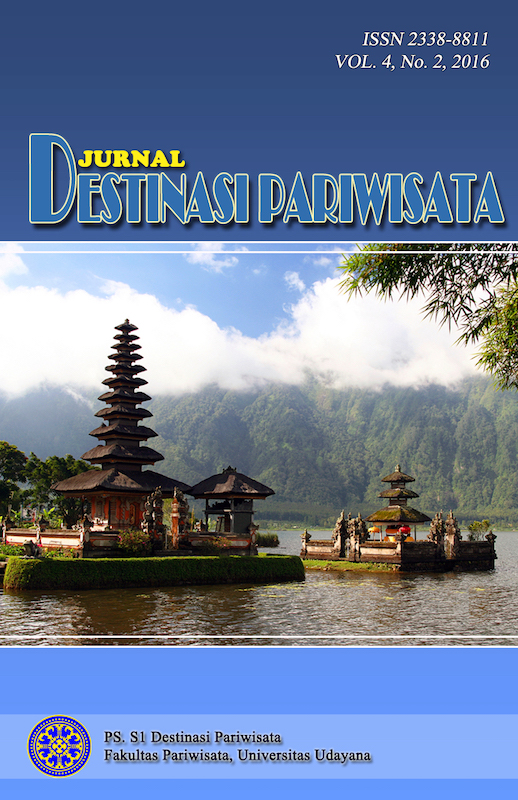PENGELOLAAN SAMPAH DI DAYA TARIK WISATA WANARA WANA/ MONKEY FOREST, DESA PADANGTEGAL, UBUD
Abstract
The amount of tourist traffic on a Travel Attractions can cause problems regarding waste generated by tourist activity and garbage that comes from the leaves of trees that are in the area. management should have the right strategy in terms of waste management that cleanliness is maintained well. This paper aims to determine how the waste management system in the Monkey Forest. In the discussion of the data used are met through technical documentation, literature review, observation, and in-depth interviews. Data were grouped and then analyzed descriptively described.
The results of the data that has been analyzed shows that waste management is done by the Monkey Forest is a way to separate between organic and non-organic. For organic waste will be disposed of to land within the forest disekitaran Monkey Forest which also will be useful as a natural organic fertilizer. As for the non-organic waste bins Monkey Forest provides a special non-organic as much as 22 pieces are placed at some point every day trash from the trash will be collected in a trash can that was in the parking lot and after will be transported by janitor The village of Padang Tegal to be brought to Temesi.








